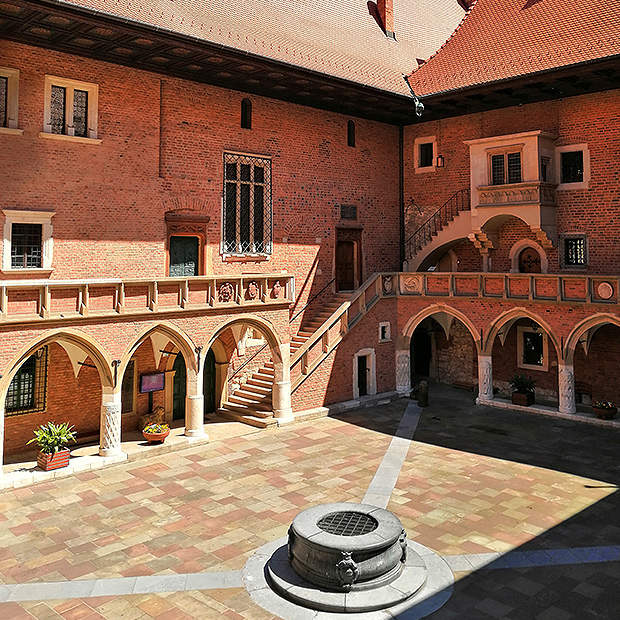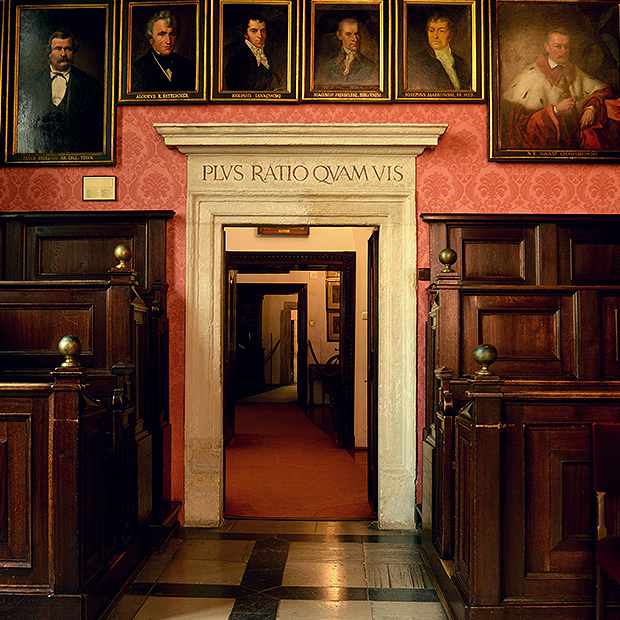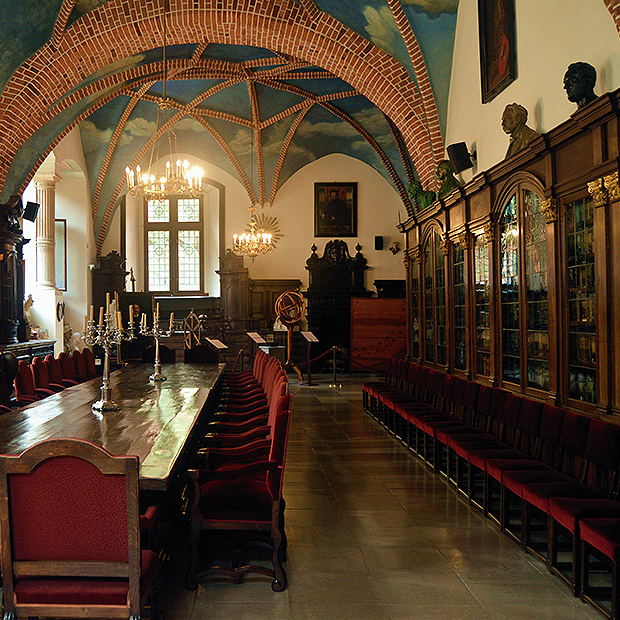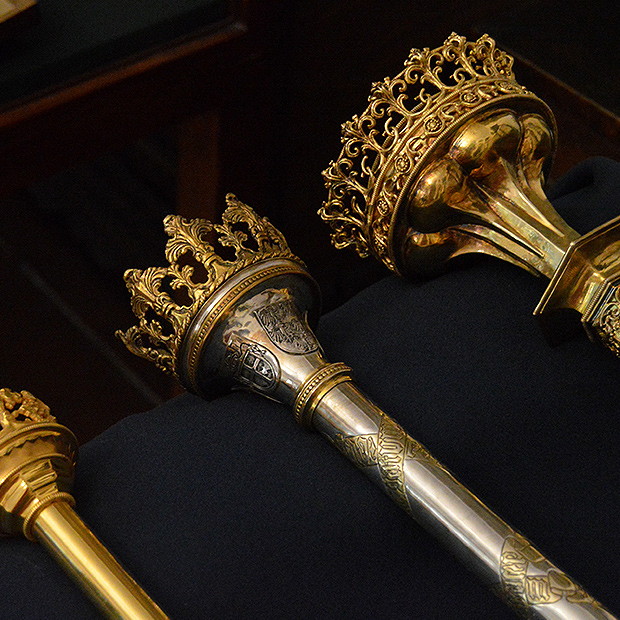Museum
The Museum represents the rich and very diverse heritage of the University. Over more than 600 years of its existence, the University has accumulated objects related to virtually every field of science and education.
Visitors coming to Collegium Maius can see the Libraria, formerly the university library, which features reconstructed instruments of the type once used by Nicholas Copernicus and busts of personages associated with the University. The following room is the Stuba Communis, the historical dining and assembly room used by scholars in the past. Both treasure rooms house the most valuable objects linked with the history of the University (sceptres, rector rings, copies of the foundation charters), but also objects donated to the University, including Andrzej Wajda’s Oscar award or the Literature Nobel Prize medal won by Wisława Szymborska. The professor’s quarters bring back the memory of the scholars who once lived in the building. Their interiors feature a collection of 18th and 19th-century furnishings.
The Nicolaus Copernicus Treasury presents a collection related to astronomy (some of the most valuable instruments in the entire collection) and objects associated with the astronomer. The Jagiellonian Hall houses a rich collection of paintings depicting portraits of professors and people associated with the University.
In the second part of the Museum, you can visit rooms featuring exhibits related to different fields of science such as chemistry, physics, cartography, mathematics or geodesy, but also a collection of medieval sculptures or Chopin's piano.
There is also a place in the Museum related to St. John of Kęty, namely a chapel dedicated to him. It is located in the place where, according to the academic tradition, Kanty was supposed to live as a professor of theology.
Also worth mentioning is the clock located above the entrance to the Libraria. Every two hours, from 9 a.m. to 5 p.m., it plays a melody which is an excerpt from an organ tablature by Jan of Lublin (Renaissance music) and the academic song Gaudeamus Igitur. The melody is accompanied by a procession of figures representing people associated with the University: the beadle, Queen Jadwiga, King Jagiello, St. Jan of Kęty, Hugo Kołłątaj, and Rector Stanisław of Skalbimierz.
Collegium Maius is not only the seat of the Museum. It also performs representative functions and serves as a showcase of the university and the venue of many events. Every last Wednesday of the month, a meeting of the Jagiellonian University Senate is held in the Libraria. The ceremonial procession at the opening of the academic year begins in Collegium Maius to the tune of music boxes and clocks from the Museum's collection. The Jagiellonian Hall, on the other hand, is the place where habilitation and honorary doctorate ceremonies take place. The building of Collegium Maius has also hosted many important people from the world of science, art and politics, such as Queen Elizabeth II and John Paul II.
The Museum also organises museum classes and lectures. We encourage you to familiarise yourself with our educational offer! www.maius.uj.edu.pl/en_GB/edukacja-i-nauka
Current opening hours of the Museum can be checked on our website: www.maius.uj.edu.pl/en_GB/godziny-otwarcia
Contact
Jagiellonian University Museum- Ul. Jagiellońska 15
- 12 663 13 07
- e-mail: collegiummaius.info@uj.edu.pl







